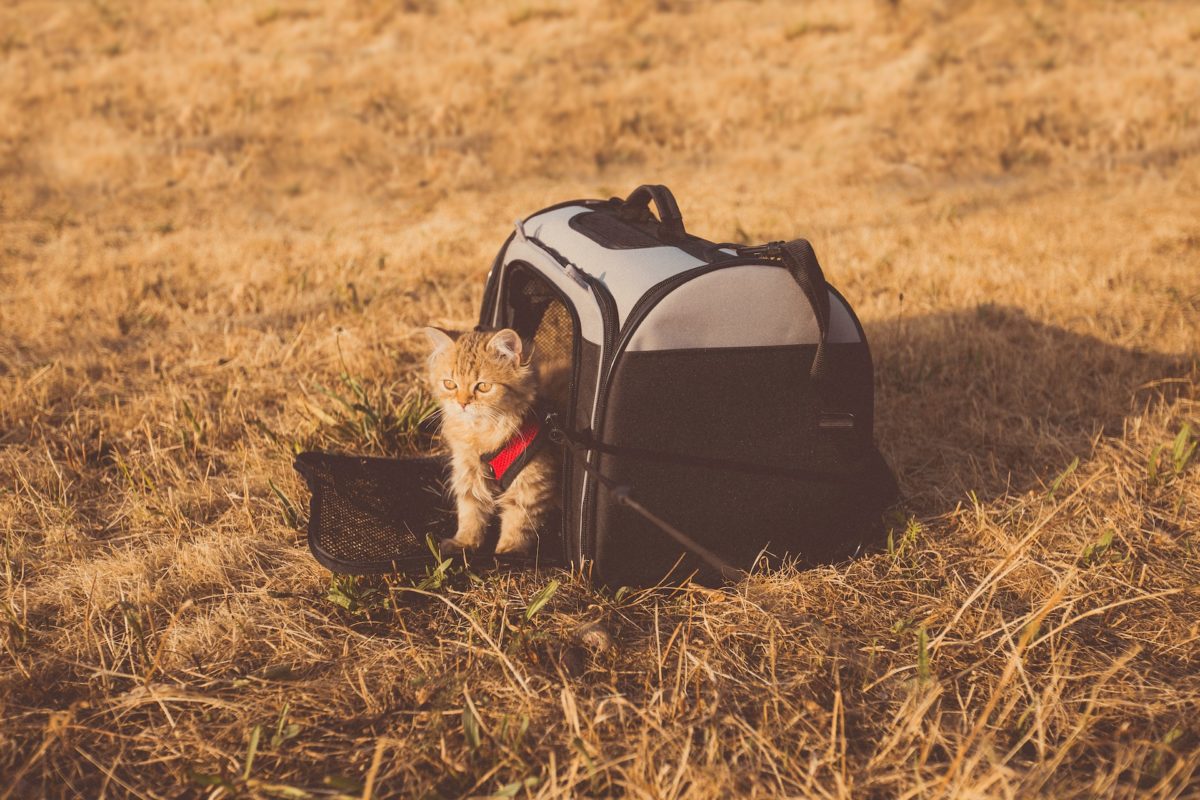Traveling with cats is something you won’t do to please your pet, but sometimes you simply have to. You move to a new location, you go on vacation or your cat has to see the vet.
If you have to travel with your cat anyway, you should first get your feline an identification tag.
Everyday cats get lost and you won’t want this to happen to your pet.
Second, ask yourself if everything is worth it.
Cats stick to their home, not their masters. In fact, cats do not have masters, only room mates – but that’s a different story. Anyway, cats prefer to stay at home. They simply love the routine. So:
Think twice before taking your cat on vacation.
For your cat, vacation is like moving to a new home. It will take days or even weeks before it is used to the hotel or holiday house you are renting. There are cats and kittens that get health problems while at the holiday address. Vomiting, diarrhea, in short: homesickness.
It’s far better to ask a friend, relative or neighbor to look after your cat while you lie on your favorite beach. Give him or her detailed instructions. What does your cat eat, how much, what are its favorite toys, how should you approach the cat etc.
Of course leave behind enough food and don’t forget to give your pet sitter the phone number of your vet and the address of the place where you will stay.
Traveling with cats by car is doable, but unpleasant.
In case you have no choice but traveling with your cat by car, you should first get yourself a carrier for traveling with cats. Felines should never walk around in a car. Also, never take your cat on your lap while in the car. An unexpected stop or a sudden outbreak of fear or anger, and your cat can easily cause dangerous situations.
Cat carriers are the only safe solution when traveling with cats by car. There are many kinds available, all differing in price and design.
During a long ride your cat or kitten might cry, but eventually, it will calm down and possibly even sleep a little. Do not put the carrier in the sun. Your pet needs fresh air, and make sure there is water and food available.
On long car trips you should also take a few toys, and – if there is enough room – put a shoebox in the pet carrier filled with litter.
A spray bottle can be used to cool your cat if it’s hot. Spray some water on its paws and face. It might not like it, but it can be essential.
Traveling with cats by air is often better accepted than car travel.
Most cats travel well by air, but your flight should be well-planned.
First, check the rules of the airline in advance. Some airlines allow a cat to travel with the owner in the cabin. If your airline doesn’t allow this, your cat will have to travel in a section of the cargo hold. Find out how check in-procedures pass off.
In both cases you should use a cat carrier. Rules define which carrier is allowed and which not.
Air travel is not recommended for pregnant cats. The airline may refuse young kittens.
If you go abroad, always find out what the regulations of your destination are, regarding animals, transport and import of pets. Vaccinations are sometimes needed, and sometimes even a quarantine is required!
Traveling with cats by rail is less stressful than car travel.
Cats don’t mind traveling by rail very much, as long as it doesn’t last too long. Again, you have to use a cat carrier.
If you are heading for a long rail journey, check if the rail company has special regulations for the transport of pets.
Always remain calm when traveling with cats.
Whether you travel by car, air or rail, you should not draw too much attention to your cat. Your cat should get the impression that the trip is something perfectly normal.
If it feels like you are stressed, your feline will also feel more stressed.
Be very careful with tranquilizers.
Never give your cat tranquilizers without the advice of your veterinarian. Only your vet can determine if your pet needs a tranquilizer. For traveling with cats, tranquilizers are often even unnecessary.




